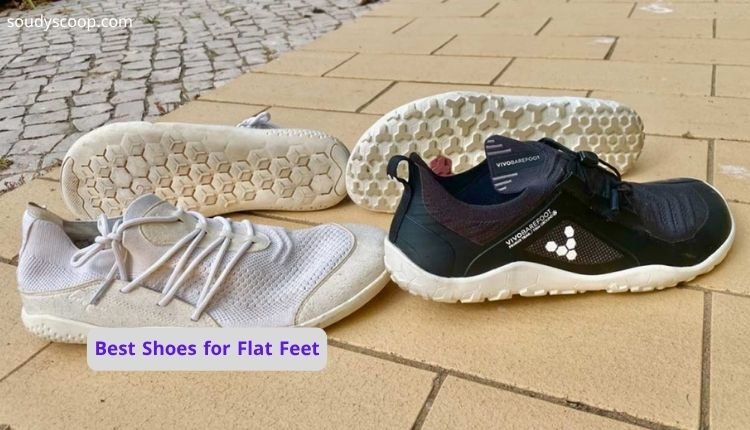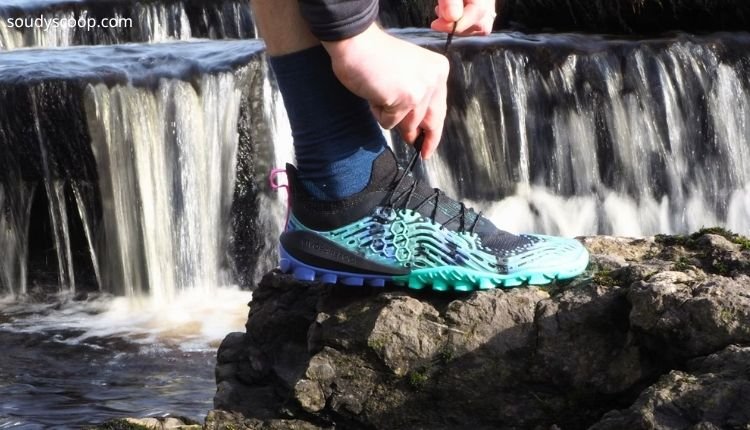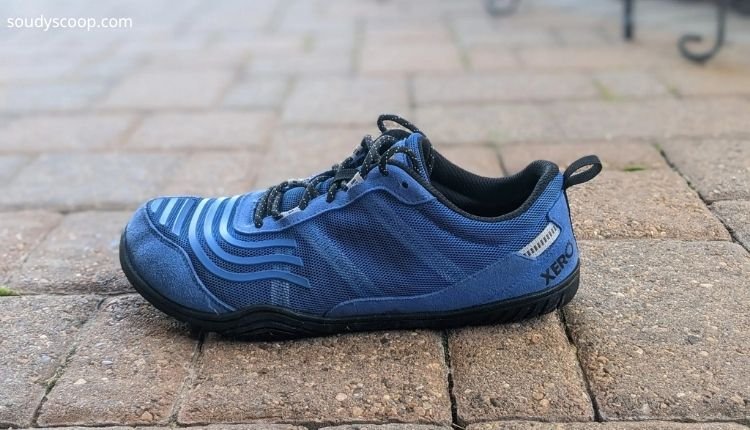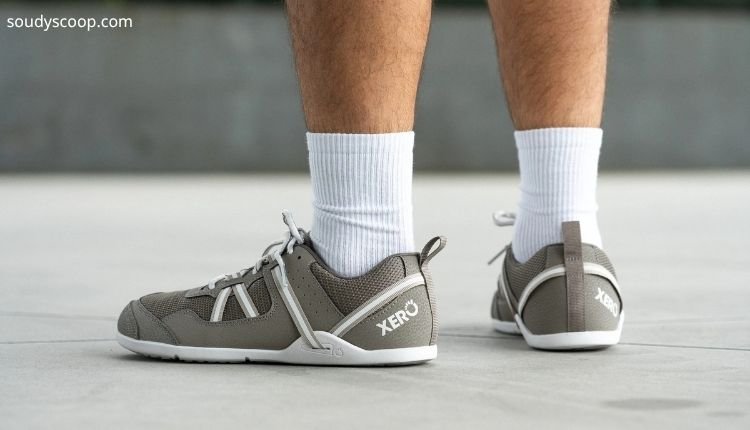The Best Shoes for Flat Feet: 4 Essential Features Backed by Science

Finding the best shoes for flat feet can be surprisingly complex. Many people unknowingly wear footwear that worsens their condition—leading to overpronation, tight calves, and chronic discomfort.
Table of Contents
Thankfully, science provides clear guidance. Research-backed evidence identifies four key characteristics every flat-foot-friendly shoe must have: zero-drop soles, a wide toe box, flexibility, and removable insoles.
In this detailed guide, we’ll explore each of these features, explain the science behind them, and recommend the best shoe brands and models that meet all four criteria.
What Causes Flat Feet?
Before diving into shoe features, it helps to understand what’s happening biomechanically. Flat feet—also known as fallen arches—occur when the arch of the foot collapses, often due to muscle weakness, poor footwear design, or tight calves. Over time, this causes the feet to roll inward (overpronate), leading to ankle instability, knee pain, and even hip or back issues.
1. Zero-Drop Soles: Fixing the Root of the Problem
One of the most critical features of shoes for flat feet is zero-drop soles, meaning there is no height difference between the heel and the forefoot.
Why is this important? Because shoes with raised heels actually make your feet flatter. When your heels are lifted, your calves shorten over time in a process called adaptive shortening. This tightness blocks ankle dorsiflexion—the ability to flex the ankle forward—which forces your body to compensate by rotating the feet outward and collapsing the arches.
A 2022 study confirmed a strong link between calf tightness and flat feet, particularly in women who often wear high heels. Switching to zero-drop shoes can help break this cycle, restoring proper alignment and encouraging your foot arch to function naturally.
If you’re unsure where to start, tools like Find My Shoes can help you locate verified zero-drop models across multiple brands.

2. Choose Footwear That Supports Ankle Mobility
Limited ankle mobility can make flat feet worse. If your ankles are stiff, wearing restrictive shoes—especially boots—can further reduce flexibility.
However, this doesn’t mean you have to avoid boots entirely. The key is selecting boots with a tongue and lace-up design, which allows the shin to move forward naturally as you walk or squat. Replacing traditional stiff laces with elasticated ones can also improve mobility by letting the ankle flex more freely.
For example, using Find My Shoes’ filters, you can search specifically for “boot” under Shoe Shape, “with tongue” under Construction, and “lace-up” under Fastening. This combination ensures both warmth and mobility in colder climates.
“Read Also: Football Boots“
3. Wide Toe Box: Stability Starts at the Toes
A wide, foot-shaped toe box is another must-have feature in the best shoes for flat feet. Allowing your toes to spread (or splay) naturally widens your base of support, improving balance and reducing arch collapse.
Research shows that even a 10° inward deviation of the big toe can flatten the arch. Unfortunately, many modern shoes taper at the front, pushing the toes inward and increasing the risk of overpronation.
In contrast, barefoot-style shoes feature a wider, anatomical shape that mimics the natural form of the foot. They allow proper toe splay, strengthen intrinsic muscles, and maintain healthy alignment.
Platforms like Find My Shoes categorize footwear by width—regular, wide, and extra-wide—so you can find the ideal fit for your specific needs.
“Read Also: Air Jordan 40 vs Nike LeBron 23“
4. Thin and Flexible Soles: Strengthen Your Arches

The third major characteristic of shoes suitable for flat feet is flexibility. A 2003 study found that weak intrinsic foot muscles can cause the arch to drop by as much as 50%.
Thin and flexible soles allow your feet to move naturally, stimulating these small muscles to become stronger. In contrast, thick, cushioned soles limit mobility and encourage dependency on external support.
A six-month study on barefoot-style shoes with ultra-thin soles revealed a 60% increase in foot strength after consistent wear. Ideally, soles should be under 10mm thick to maintain both flexibility and protection.
That said, transitioning too quickly to minimalist footwear can lead to overuse injuries. The solution? Transition gradually or alternate with insoles to support your feet during the adaptation period.
“Read Also: Best Football Boots Comparison“
Transitioning Safely to Barefoot Shoes
If you’re new to barefoot shoes, start slowly. Gradually increase wear time each week while allowing recovery days. You can also insert arch-supporting insoles intermittently to prevent overtraining your foot muscles.
Courses like Strong Feet provide structured transition plans, including a 12-week schedule that calculates ideal barefoot-to-supported shoe ratios based on your activity level.
For this reason, the best barefoot shoes for flat feet should have removable insoles, allowing you to adapt as your feet strengthen.
The Four Science-Backed Shoe Features for Flat Feet

To recap, the best shoes for flat feet should include:
- Zero-drop soles – Restore natural foot posture and improve calf flexibility.
- Ankle-friendly design – Avoid restrictive structures; opt for lace-up or tongued designs.
- Wide toe box – Allow natural toe splay for balance and stability.
- Flexible, thin soles – Strengthen the intrinsic muscles that support your arch.
You can quickly find shoes that meet all four features by selecting the Flat Feet preset under the “Health” category on Find My Shoes.
“Read Also: Best Turf Soccer Shoes 2025“
Best Shoe Models for Flat Feet (Tried & Tested)
After extensive testing, here are seven excellent options for flat-footed users:
1. Lonowear Flow
A biodegradable barefoot shoe that balances comfort and sustainability. It features a wide toe box, flexible sole, and breathable knit upper—all for under $100.
2. Xero Prio
A versatile choice suitable for both training and casual wear. Its zero-drop sole and supportive heel strap make it a favorite for all-day comfort.
3. Xero 360
Designed for cross-training, this model includes omni-directional tread for traction and durable rubber details ideal for rope climbing or gym workouts.
4. Vivo Hydro ESC
Built for trail runners, this premium model includes a puncture-resistant sole, breathable mesh, and rugged durability for all-terrain performance.
5. Bahé Revive
Ideal for runners who prefer cushioning. Its 10mm sole thickness is the upper limit for flat feet, offering comfort on hard surfaces like concrete.
6. Wildling Nebulas
With just 2.5mm of sole thickness, this shoe offers unmatched ground feel and flexibility. Made from merino wool, it’s breathable and odor-resistant.
7. Saguaro Dream II
A formal option that doesn’t sacrifice comfort. Affordable, minimalist, and suitable for both office and casual wear.
“Read Also: Nike Training Shoes”
How to Use “Find My Shoes” for Flat Feet
The Find My Shoes tool allows users to:
- Filter by toe box width, sole thickness, removable insoles, and construction type.
- Access preset searches for specific needs like “Flat Feet.”
- Browse additional resources such as arch-strengthening exercises, recommended insoles, and mobility techniques.
FAQs About Shoes for Flat Feet
1. What type of sole is best for flat feet?
Zero-drop, flexible soles under 10mm thick are ideal as they promote natural movement and strengthen the arch.
2. Are barefoot shoes good for flat feet?
Yes—but transition gradually. Barefoot shoes build foot strength but can cause strain if used excessively at first.
3. Should I wear insoles if I have flat feet?
Use removable insoles intermittently. Constant use may weaken your foot muscles, but alternating helps recovery.
4. Can boots be suitable for flat feet?
Absolutely—if they have a tongue and lace-up design that allows ankle flexion and movement.
5. How long does it take to strengthen flat feet?
With proper footwear and exercises, noticeable improvements can occur within 8–12 weeks.
the best shoes for flat feet: Conclusion
Choosing the best shoes for flat feet doesn’t have to be confusing. By focusing on scientifically proven features—zero-drop soles, wide toe boxes, flexibility, and removable insoles—you can restore natural function, improve posture, and reduce pain.
Platforms like Find My Shoes simplify the process, helping you locate footwear that meets these standards while offering verified reviews and helpful guides.
Your journey toward stronger, healthier feet begins with the right pair of shoes—because the best foundation starts from the ground up.
As a dedicated footwear reviewer, I have spent years analyzing and testing athletic shoes across every category, from high-performance running sneakers to lifestyle-inspired basketball silhouettes. My work goes beyond simple first impressions; each review is built on a foundation of hands-on experience, thorough research, and attention to the details that matter most to athletes and casual wearers alike. I aim to bridge the gap between brands’ marketing claims and real-world performance, giving readers an honest, balanced perspective.
My writing style combines technical evaluation with an accessible tone, so both professionals and everyday enthusiasts can understand the strengths and weaknesses of each shoe. Whether discussing midsole cushioning technology, outsole traction, or upper material breathability, I break down complex features into practical insights. Readers trust my reviews because they know I highlight both the benefits and potential drawbacks, helping them make more confident purchasing decisions.
Over time, my work has evolved into a comprehensive resource for anyone seeking guidance on athletic footwear. I regularly compare new releases with previous models to highlight improvements or missed opportunities, while also exploring how different shoes fit specific activities—such as marathon training, weightlifting, or casual streetwear. By staying updated with industry trends and listening to community feedback, I ensure that my reviews remain relevant, informative, and genuinely useful.
Ultimately, my mission is to provide clarity in a crowded market. With countless options available, choosing the right pair of shoes can feel overwhelming. Through in-depth, unbiased, and engaging reviews, I strive to make that decision easier, equipping readers with the knowledge they need to find footwear that truly matches their performance goals and personal style.




